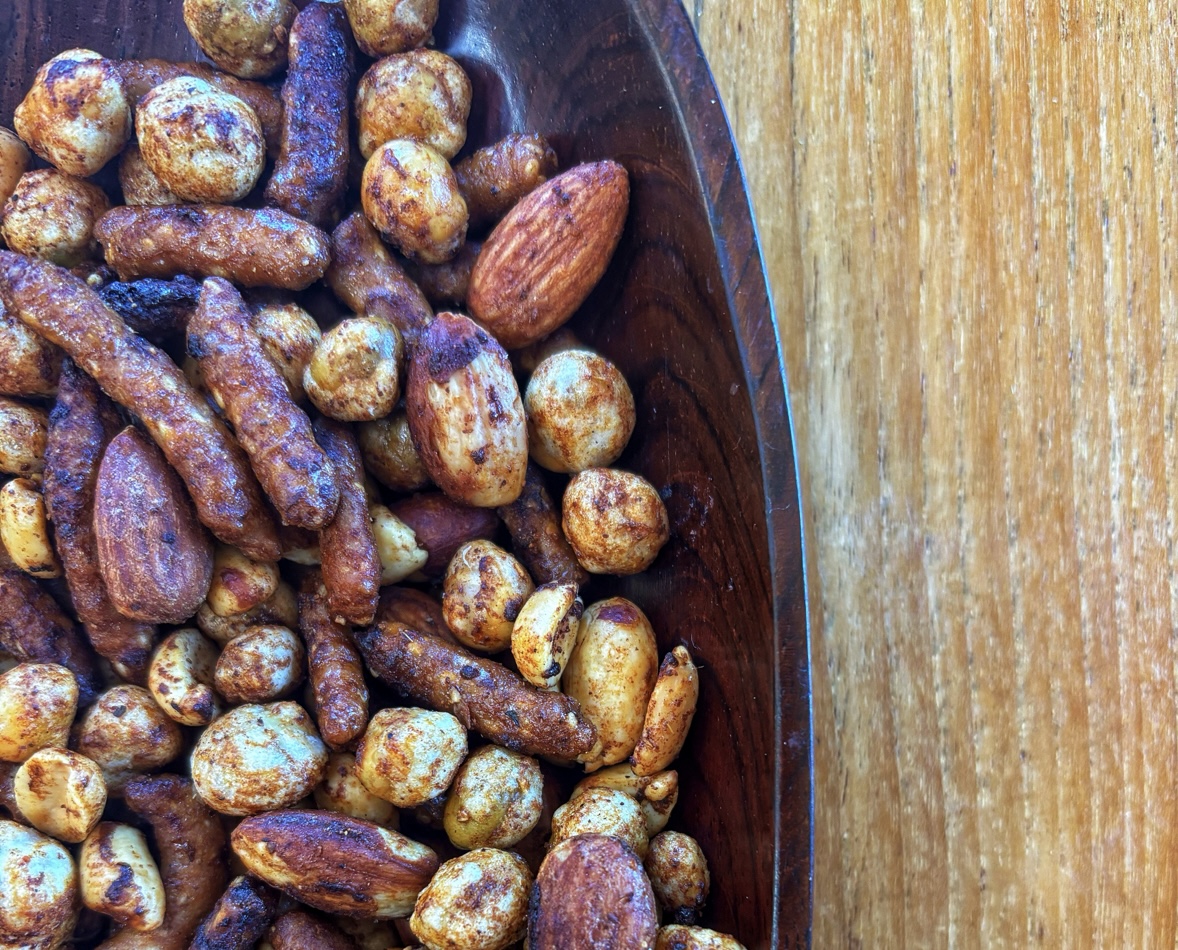We have all heard it before. Whole grains, when part of a healthy diet, may reduce the risk of heart disease, help with weight management, and may even reduce constipation (as whole grains contain fiber). But, do we really meet our daily requirement of whole grains?
According to the Dietary Guidelines for Americans 2010, less than 5 percent of Americans meet their daily whole-grain recommendation, while consuming on average 6 servings of refined grains (when no more than three are recommended). So, as a whole, Americans generally eat enough total grains, however most of the grains consumed are refined grains rather than whole grains (And, some refined grains are high in solid fats and sugars.)
(Click here for exact measurements for gender and age)
Don’t have time to measure things out? TheChooseMyPlate.gov website breaks it down into more simple terms: “In general, 1 slice of bread, 1 cup of ready-to-eat cereal, or ½ cup of cooked rice, cooked pasta, or cooked cereal can be considered as 1 ounce equivalent from the Grains Group.” The chart lists specific amounts that count as 1-ounce equivalent of grains towards your recommended daily intake.
What is a Whole Grain?
But, if we want to be the beneficiary of better health and the reduced risk of chronic diseases by consuming more whole grains, we must first understand what a whole grain is.
According to the Whole Grains Council, “Whole grains or foods made from them contain all the essential parts and naturally-occurring nutrients of the entire grain seed. If the grain has been processed (e.g., cracked, crushed, rolled, extruded, and/or cooked), the food product should deliver approximately the same rich balance of nutrients that are found in the original grain seed.”
A few examples of whole grains include: wheatberry, barley, bulgur, faro, millet, quinoa, amaranth, oats, corn, popcorn, and rye.
If you don’t typically buy grains in bulk form and cook them as part of a delicious meal, then finding whole grain foods may be a challenge. However, the Whole Grains Council has created an official packaging symbol called the Whole Grain Stamp that helps consumers find real whole grain products. The Stamp first appeared on store shelves in mid-2005 and is now becoming more widespread.
The 100% Stamp assures you that a food contains a full serving or more of whole grain in each labeled serving and that ALL the grain is whole grain, while the basic Whole Grain Stamp appears on products containing at least half a serving of whole grain per labeled serving.
“Well,” you ask, “what if there is no stamp? Does that mean they aren’t whole grain foods?” No, not necessarily. “Many whole grain products not yet using the Stamp will list the grams of whole grain somewhere on the package, or say something like “100% whole wheat,” explains the Whole Grains Council. “You can trust these statements. But be skeptical if you see the words ‘whole grain’ without more details, such as ‘crackers made with whole grain.’ The product may contain only miniscule amounts of whole grains.”
Meeting the daily recommendations for consuming whole grains can be challenging, and especially so for those suffering from celiac disease (a gluten intolerance). A strict gluten free diet is currently the only treatment for celiac disease, and requires the complete removal of all wheat, rye and barley products, eliminating some of the most common sources of both refined and whole grain products in the US.
There is a growing number of gluten-free products available at the supermarket, however, replacements for cereals and baking mixes are often made up of a combination of cornstarch, potato starch, tapioca starch and/or white rice flour. The nutrient composition of these produce pale in comparison to those made from whole grains.
With some of the most common grains restricted from the diet, those with gluten intolerance must look for different options — grains that are gluten free. The good news is that many gluten free whole grains are packed with higher levels of fiber and minerals than the more familiar grains.
Gluten-free grains include amaranth, buckwheat, corn, millet, montina, quinoa, rice, sorghum, teff and wild rice. (Note: Oats is a gluten free grain, however, there is a high risk of gluten contamination during production.)
Gluten Free Whole Grains
Amaranth: Amaranth is high in protein, particularly in the amino acid, Lysine, which is low in the cereal grains. In fact, Amaranth has the highest lysine content of all the grains in this study with Quinoa coming in a close second.
Montina™: Montina™ is the registered trade name for Amazing Grains’ flour, which is milled from the seed of a native grass called Indian ricegrass (IRG) (Achnatherum hymenoides). This grass is not related to rice. Montina™ flour is milled from the seed of a wild grass first used by Native Americans thousands of years ago. Montina™ brings flavor, protein and fiber to your baking needs.
Millet: Millet is tiny in size and round in shape and can be white, gray, yellow or red. The most widely available form of millet found in stores is the hulled variety, although traditional couscous made from cracked millet can also be found. The term millet refers to a variety of grains, some of which do not belong to the same genus. It is a delicious grain whose consistency varies depending upon cooking method; it can be creamy like mashed potatoes or fluffy like rice.
Quinoa: Quinoa contains more protein than any other grain; an average of 16.2 percent, compared with 7.5 percent for rice, 9.9 percent for millet, and 14 percent for wheat. Some varieties of quinoa are more than 20 percent protein. Quinoa’s protein is of an unusually high quality. It is a complete protein, with an essential amino acid balance close to the ideal … similar to milk! Click for more information
Teff: Teff is a fine grain, about the size of a poppy seed that comes in a variety of colors, from white and red to dark brown. Teff grows predominantly in Ethiopia and Eritrea. As such, teff comprises the staple grain of their cuisines. Ground into flour, teff is used to make the traditional bread, injera – a flat, pancake-like, slightly sour bread that complements well the exotic spices found in food.
Sorghum: Sorghum has recently appeared in food products in the US, because of use in gluten-free food products. Sorghum is an excellent substitute for wheat for those who cannot tolerate gluten. Sorghum is used to make both leavened and unleavened breads. In Sahelian Africa, it is primarily used in couscous. It can be steamed or popped and is consumed as a fresh vegetable in some areas of the world. Syrup is made from sweet sorghum.
Wild Rice: Wild rice is not a “rice” at all, but rather an aquatic grass. Cooked wild rice has a rich nutty flavor, sometimes described as a smoky flavor, and a texture that is satisfyingly chewy. The slender, elongated grains that often come to market are usually about one-half inch in length and almost black in color with some touches of green.
Gluten-free grains are wonderful choice for the general population and need not be limited to those with celiac disease. To ensure maximum energy and healthy, focus on consuming nutrient dense foods, of which whole grains are a great option. Whether or not you are suffering form gluten intolerance, explore new possibilities of whole grains, and liven up your meal time.
Following are two delicious whole grain recipes:
(click through to the following page)
Teff Polenta
(Recipe provided from the Teff Company www.teffco.com)
- 2 cups water
- 2 Tbsp extra virgin olive oil
- 8 cloves garlic, thickly sliced
- 1 cup coarsely chopped onion
- 1 cup coarsely chopped green pepper
- 2⁄3 cup teff grain
- 1⁄2 teaspoon sea salt
- 2 cups coarsely chopped plum tomatoes
- 1 cup coarsely chopped fresh basil
- Boil water in a tea kettle.
Place the oil in a 10-inch skillet and warm over medium heat. Add garlic and onions and sauté, stirring occasion- ally, for about 5 minutes or until fragrant. Add peppers and sauté for 2 minutes or until bright green. Add teff grain.
Turn off the heat to prevent splattering and add the boiling water and salt. Resume heat and let simmer 2 minutes. Add tomatoes and basil.
Cover and simmer for 10–15 minutes, stirring occasion- ally, until the water is absorbed. There may be some extra liquid from the tomatoes but as long as the teff is not crunchy, the polenta is done. Taste and adjust the seasonings if desired. Transfer to an un-oiled 9-inch pie plate. Let it cool for at least 30 minutes. Slice and serve.
Amaranth Vegetable Stew
Adapted from a recipe by Karen Railey
- 1⁄2 cup amaranth seed
- 1 1⁄2 cups water
- 1 onion, chopped
- 1 Tbsp. olive oil
- 2 cloves garlic, minced
- 1⁄2 lb mushrooms, sliced
- 1 can diced tomatoes,
- 15 oz 11⁄2 tsp dried basil
- 1 1⁄2 tsp dried oregano
- 10 oz baby spinach Salt and pepper to taste
Bring amaranth and water to a boil. Reduce heat, cover and simmer for 25–30 minutes.
While amaranth is cooking, sauté onion in the olive oil. Once the onion has become translucent, add the garlic and mushrooms and sauté a few minutes more. Add tomatoes, including liquid, and basil, oregano, salt and pepper. Once the mixture is hot again, mix in the spinach and cover until the spinach is wilted.
Add amaranth to the vegetable mixture and mix well.




